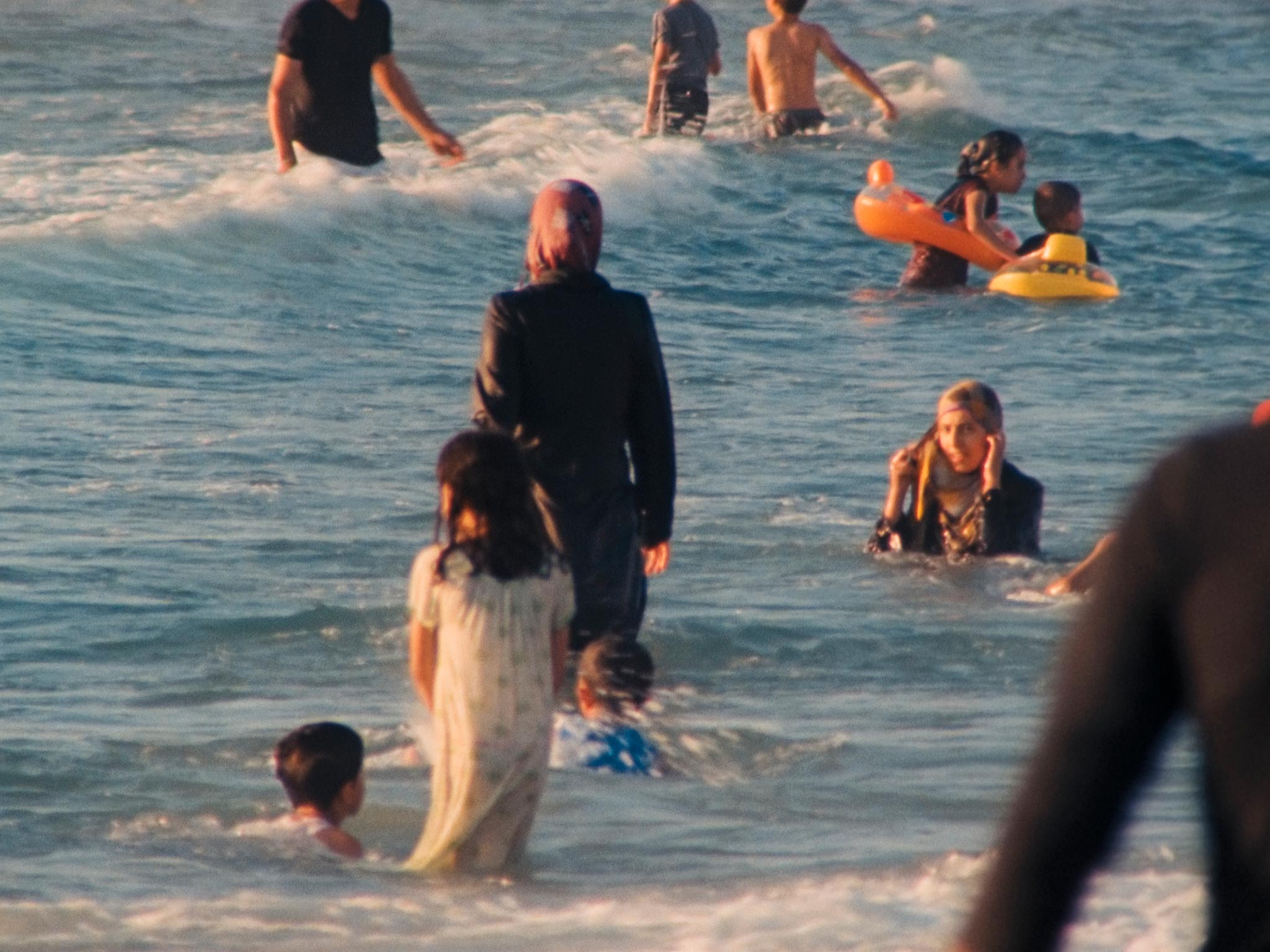Green, how I want you green.
Green wind. Green branches.
The ship out on the sea
and the horse on the mountain.
–Federico García Lorca
This series of films departs from a conversation on landscape in the poetry of Federico Garcia Lorca and Mahmoud Darwish. It posits landscape as a place of connection as well as a reflection on memory, distance, and exile. The figure of the olive tree connects a wide Mediterranean region through millennia of parallel agricultural ritual and ecological coexistence. The olive branch is known as a symbol of peace while residing in a region that has been cut apart and divided.
Trees are a living archive of the land. Olive trees can live up to thousands of years, making them a stable and familiar element for generations of their neighbours. The olive branch is a symbol of peace whose stable grip has been wrested from the soil. They are also targets in the ongoing catastrophe in Palestine that is impossible not to speak of.
***
In Rosalind Nashashibi’s Electrical Gaza (2015), scenes of everyday life in the Gaza strip become mythical encounters with this isolated and besieged fulcrum of the Mediterranean. Filmed on analogue 16mm film, the grain of the surface and interspersed moments of animation create a dreamy atmosphere of respite from the violence typically associated with this enclosed landscape. It was filmed in the months preceding the Israeli ‘Operation Protective Edge’ that bombarded the strip in July and August 2014, this window of time allowed for an image of life in Gaza to be created that counters the mediated images of rubble and destruction with the familiarity of a community operating against all odds. The film is about access and observation of a place that few can get permission to enter or exit, one that became a place of myth after Israel’s military encirclement of the territory in 2007.[1]
If Gaza is typically associated with violence, bombardments, and buildings reduced to rubble, Nashashibi’s film captures the strip in a relative caesura of violence and dignifies actions of everyday life.[2] Although the film avoids political slogans or taking an obvious stance, it elevates the mundane into a realm of active significance. In Gaza, preparing a falafel or having a conversation with friends in a living room is always political, the existence of life in relative calm is a testament to the history that has forced its population to live under a siege for well over a decade. Nashashibi paints a portrait of a society full of joy amid its prohibition.
The analogue film is interspersed with moments of cartoon-drawn animation of the same cityscapes and interiors as captured by the 16mm film. These illustrated scenes recall experiences of childhood,[3] shared narratives and references made by children who have been the main victims of the continuing brutalities carried out by the IDF against the strip. These drawn intrusions pierce the narrative with the intentional construction of composition and frame – making the viewer conscious of Nashashibi’s observational and artistic intent. One of the frames captures the Rafah border crossing that appears like an inaccessible futuristic portal protecting a threshold to another world. Every frame is a way of seeing that follows the tradition of filmmakers influenced by Renaissance masters.[4] In combination with children’s chants, calls to prayer, and spontaneous choirs are the sharp whistles of Hamas brigades marching through downtown city streets to jolt us out of calm reveries. Gaza’s architecture and its people collaborate to create extraordinary visuals of the quotidian – an electrifying appeal for human dignity.
Rosalind Nashashibi (1973, London, UK) is a London based artist of Northern Irish and Palestinian descent. She received her BA in Painting from Sheffield Hallam University, Sheffield (UK) and her MFA at Glasgow School of Art, Glasgow (UK). In 2020, Nashashibi was artist in residence at the National Gallery in London (UK). She was a Turner Prize nominee in 2017, and represented Scotland in the 52nd Venice Biennale. Her work has been included in Documenta 14, The 14th Shanghai Biennale, Manifesta 7, The Nordic Triennial, and Sharjah 10. Nashashibi received a Paul Hamlyn Award in 2014 and Becks Futures Award in 2003. Her solo exhibitions include; Nottingham Contemporary (UK); Musée Art Contemporain Carré d’Art, Nîmes (FR), Radvila Palace Museum of Art for CAC, Vilnius (LT), Vienna Secession, (A), Kunstinstituut Melly, Rotterdam, (NL), The High Line, New York, (US); The Art Institute of Chicago, (US); and ICA, London (UK).
Àngels Miralda (1990) is an independent writer and curator. Her recent exhibitions have taken place at Something Else III (Cairo Biennale); Garage Art Space (Nicosia); Radius CCA (Delft), P////AKT (Amsterdam), Tallinn Art Hall (Estonia), MGLC – International Centre for Graphic Arts (Ljubljana), De Appel (Amsterdam), Galerija Miroslav Kraljevic (Municipal Gallery of Zagreb), the Museum of Contemporary Art of Chile (Santiago), Museu de Angra do Heroísmo (Terceira – Azores), and the Latvian Centre for Contemporary Art (Riga). Miralda wrote for Artforum from 2019-2023 and regularly publishes with Terremoto (Mexico City), A*Desk (Barcelona), Arts of the Working Class (Berlin), and is editor-in-chief of Collecteurs (New York).
Nashashibi’s films have been featured in film festivals and screenings worldwide over the last twenty years including Edinburgh Film Festival, New York Film Festival, Open City Documentary Festival, Festival Ciné Palestine, Pesaro Film Festival and others.
[1]Unicef, “The humanitarian impact of 15 years of blockade” June 2022. https://www.unicef.org/mena/documents/gaza-strip-humanitarian-impact-15-years-blockade-june-2022
[2] “Nashashibi’s is an observation that dignifies those on screen, and specifically Palestinian or Arab ‘Others’ with a wider spectrum of life experiences than that of the ‘wretched,’ oppressed, subordinate to white or European privilege.” Minou Norouzi, “On Discomfort & Empathy in Rosalind Nashashibi’s Electrical Gaza (2015)” October 5 2023.
https://maifeminism.com/on-discomfort-and-empathy-in-rosalind-nashashibis-electrical-gaza-2015/
[3] Annie Godfrey Larmon, “Rosalind Nashashibi” Artforum, https://www.artforum.com/events/rosalind-nashashibi-6-224176/
[4] T.J. Clark introduction to “Heretical Aesthetics: Pasolini on Painting” Verso Books. London. 2023.

